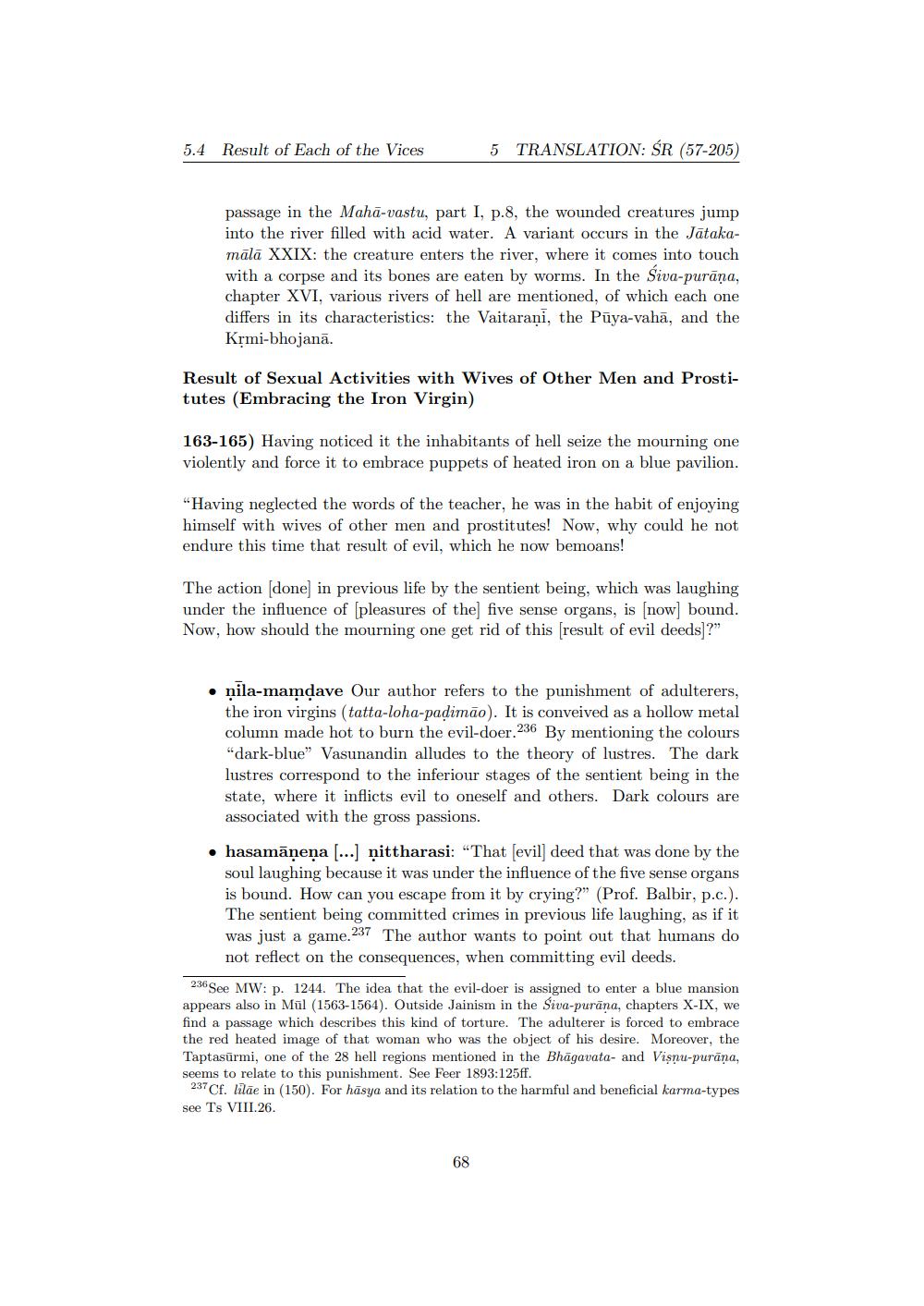________________
5.4 Result of Each of the Vices
5 TRANSLATION: ŚR (57-205)
passage in the Maha-vastu, part I, p.8, the wounded creatures jump into the river filled with acid water. A variant occurs in the Jātakamālā XXIX: the creature enters the river, where it comes into touch with a corpse and its bones are eaten by worms. In the Siva-purana, chapter XVI, various rivers of hell are mentioned, of which each one differs in its characteristics: the Vaitarani, the Puya-vahā, and the Krmi-bhojana.
Result of Sexual Activities with Wives of Other Men and Prostitutes (Embracing the Iron Virgin)
163-165) Having noticed it the inhabitants of hell seize the mourning one violently and force it to embrace puppets of heated iron on a blue pavilion.
"Having neglected the words of the teacher, he was in the habit of enjoying himself with wives of other men and prostitutes! Now, why could he not endure this time that result of evil, which he now bemoans!
The action [done] in previous life by the sentient being, which was laughing under the influence of [pleasures of the] five sense organs, is [now] bound. Now, how should the mourning one get rid of this [result of evil deeds]?"
pila-mamdave Our author refers to the punishment of adulterers, the iron virgins (tatta-loha-paḍimão). It is conveived as a hollow metal column made hot to burn the evil-doer.236 By mentioning the colours "dark-blue" Vasunandin alludes to the theory of lustres. The dark lustres correspond to the inferiour stages of the sentient being in the state, where it inflicts evil to oneself and others. Dark colours are associated with the gross passions.
⚫ hasamāṇeṇa [...] nittharasi: "That [evil] deed that was done by the soul laughing because it was under the influence of the five sense organs is bound. How can you escape from it by crying?" (Prof. Balbir, p.c.). The sentient being committed crimes in previous life laughing, as if it was just a game.237 The author wants to point out that humans do not reflect on the consequences, when committing evil deeds.
236 See MW: p. 1244. The idea that the evil-doer is assigned to enter a blue mansion appears also in Mül (1563-1564). Outside Jainism in the Siva-purana, chapters X-IX, we find a passage which describes this kind of torture. The adulterer is forced to embrace the red heated image of that woman who was the object of his desire. Moreover, the Taptasūrmi, one of the 28 hell regions mentioned in the Bhagavata- and Viṣṇu-purana, seems to relate to this punishment. See Feer 1893:125ff.
237 Cf. lilae in (150). For hasya and its relation to the harmful and beneficial karma-types see T's VIII.26.
68




